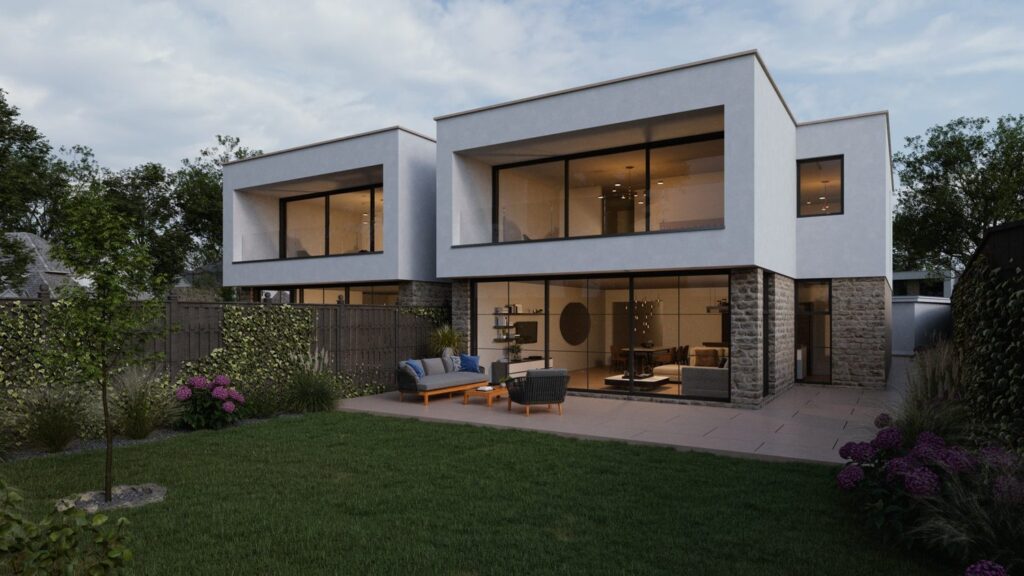
Principles of Climate Responsive Design for Sustainable Living
In today’s world, the principles of climate responsive design have become essential for creating sustainable and eco-friendly homes. As the effects of climate change become more apparent, it is crucial to consider how we design our living spaces to adapt to and mitigate these changes. This article delves into the core principles of climate responsive design, providing insights for home enthusiasts on how to make homes more energy-efficient and environmentally friendly.

Understanding Climate Responsive Design
Climate responsive design refers to architectural practices that respond to the climate and environmental conditions of a specific location. By understanding the unique climate characteristics, architects can design buildings that naturally regulate temperature, enhance comfort, and reduce energy consumption. Incorporating these principles not only benefits the environment but also enhances the quality of life for inhabitants.
Importance of Climate Responsive Design
With rising global temperatures, designing homes that can adapt to climate variations is more important than ever. By utilizing natural resources efficiently and reducing dependency on mechanical systems, climate responsive design helps in minimizing the carbon footprint of buildings. This approach also contributes to significant cost savings on energy bills over time.
Key Principles of Climate Responsive Design
Orientation and Site Analysis
The first step in climate responsive design is analyzing the site and understanding its climatic conditions. Proper orientation of the building can maximize natural light and ventilation, reducing the need for artificial lighting and air conditioning. Architects consider factors like sun path, wind direction, and topography to position the building optimally.
Passive Solar Design
Passive solar design involves harnessing solar energy to heat and cool buildings naturally. By strategically placing windows, thermal mass, and shading devices, homes can maintain comfortable temperatures year-round. This principle is crucial in reducing energy consumption and reliance on artificial heating and cooling systems.
Natural Ventilation
Effective natural ventilation is a cornerstone of climate responsive design. By facilitating the flow of fresh air through spaces, buildings can maintain indoor air quality and comfort. Techniques like cross-ventilation, stack ventilation, and the use of atriums are employed to enhance air movement. Learn more about ventilation in design.
Use of Local and Recycled Materials
Choosing locally sourced and recycled materials reduces the environmental impact of construction and supports the local economy. These materials often have lower embodied energy and are more suited to the local climate. Check out how recycled materials can be integrated into construction.
Water Efficiency
Water conservation is another vital aspect of climate responsive design. Implementing rainwater harvesting systems, greywater recycling, and efficient plumbing fixtures can significantly reduce water consumption. These measures not only conserve water but also lower utility bills.
Energy Efficiency
Incorporating energy-efficient appliances and lighting, as well as renewable energy sources like solar panels, enhances a home’s sustainability. By reducing energy demand and utilizing clean energy, homes can achieve net-zero energy consumption.
Thermal Comfort
Ensuring thermal comfort involves maintaining a stable indoor temperature without excessive reliance on mechanical systems. This can be achieved through proper insulation, thermal mass, and strategic shading, allowing for a comfortable living environment.
Implementing Climate Responsive Design
Innovative and Affordable Solutions
Climate responsive design doesn’t have to be expensive. There are many innovative and affordable solutions that can be implemented in both new constructions and existing homes. Explore affordable designs to get started.
Case Studies and Success Stories
Many projects worldwide have successfully implemented climate responsive design principles. These case studies provide valuable insights and inspiration for those looking to adopt similar practices. Discover more about success stories in sustainable housing.
The Future of Climate Responsive Design
As technology advances, the future of climate responsive design looks promising. With innovations in smart home technology and sustainable materials, the potential for creating energy-efficient and environmentally friendly homes continues to grow. Staying informed about these developments is key to adapting to a changing climate.
Conclusion
The principles of climate responsive design offer a pathway to sustainable living that benefits both the environment and homeowners. By understanding and implementing these principles, we can create homes that are not only comfortable and efficient but also resilient to the challenges posed by climate change. For more in-depth information, consider visiting UN Habitat’s sustainable housing framework.

FAQs
What is climate responsive design?
Climate responsive design is an architectural approach that adapts buildings to the specific climatic conditions of their location, focusing on energy efficiency and environmental sustainability.
Why is natural ventilation important?
Natural ventilation is crucial for maintaining indoor air quality and comfort, reducing the need for mechanical cooling systems, and lowering energy consumption.
How can I make my home more climate responsive?
To make your home more climate responsive, consider optimizing its orientation, using local materials, implementing passive solar design, and enhancing natural ventilation. These steps can significantly improve energy efficiency and comfort.
This article contains affiliate links. We may earn a commission at no extra cost to you.